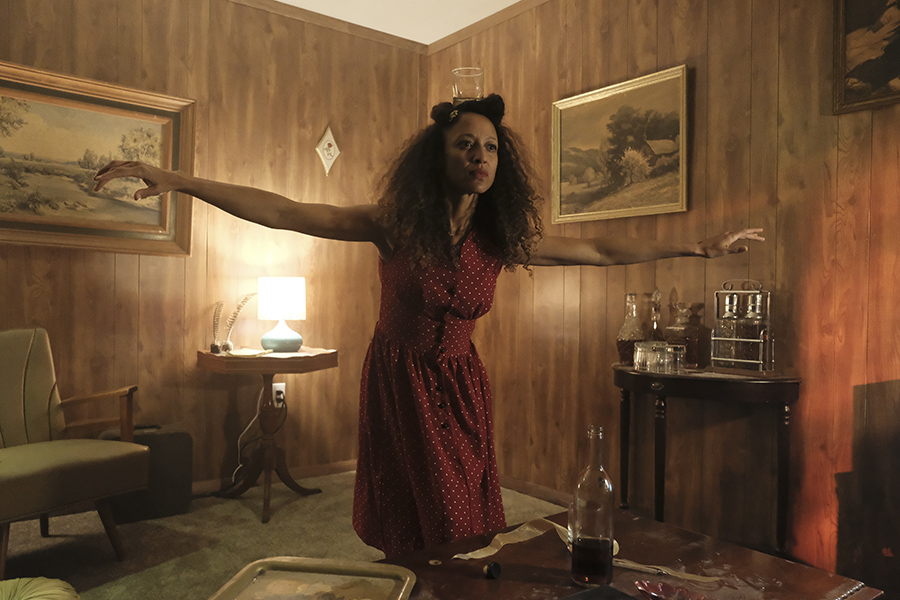Black Lodge
WORLD PREMIERE OPERA WITH THE PHILADELPHIA ORCHESTRA, LIBRETTO BY ANNE WALDMAN

Libretto by Anne Waldman
Story & Screenplay by Michael Joseph McQuilken
World Premiere
Film Screening with Live Performance
Part of Festival O22 and the 2022 Philadelphia Fringe Festival
Saturday, October 1, 2022, 9 pm
Sunday, October 2, 2022, 8 pm
What does it take to face ourselves? Enter the darkness in search of something beautiful, transcendent. But be very careful what you need to know…
Drawing on the disturbing and complicated mythologies of the surrealist writer William S. Burroughs (Naked Lunch), Black Lodge uses dance, industrial rock, classical string quartet, and opera to take viewers through a Lynchian psychological escape room.
Set in a nightmarish Bardo, a place between death and rebirth, a tormented writer faces down demons of his own making. Forced to confront the darkest moment in his life, he mines fractured and repressed memories for a way out. A woman is at the center of all the writer’s afterlife encounters. She is the subject of his life’s greatest regret, and she materializes everywhere in this Otherworld. The writer cannot detach any thoughts of his life from her.
Part film screening and part industrial rock opera concert, this world premiere event features glam opera band Timur & the Dime Museum alongside musicians from the Opera Philadelphia Orchestra.
Review from the LA Times, October 22, 2024
The goth opera ‘Black Lodge’ delivers a messy, sonic shock in DTLA
“The non-narrative libretto is by one of our few remaining Beat poets and a treasure of that era, Anne Waldman.”

Review from the Philadelphia Weekly, August 25, 2022
Waldman‘s libretto for Little’s Black Lodge touches on everything Burroughs from the dream-conscious trips to Tangiers to the not-at-all-real Bardo states and waves of consciousness travelling and telepathy.

The ferocity of Black Lodge came as she got connected to Little and found how he was connected to the operatic work. “Everything about Burroughs became this existential question, about writing one’s way out – the protagonist-artist being the hero – while touching on aspects of cancel culture’s extremes on one hand and the psychology of karma on the other hand,” says Waldman. “It is an investigatory opera, not one that strives to make you have an opinion, but rather one that expands the field around consciousness. Nothing is easily resolved – there is no simple ending like the ones where the cops come in and save the day.”
Like Burroughs’ best work, nothing truly ends. It is here to go…. forward.
The tension in the language – cut ups – and the connection between Lynch, Burroughs and Artaud (whose stays in five different mental institutions with shock treatment) overlaps and creates synchronicity among these influential artists (“to . say nothing of offering real challenges for a feminist” laughs Waldman (when considering Burroughs’ occasional, but hardcore misogyny), and her libretto all but wrote itself.
“Having Anne embody each of them in the work, all I can say is that it is so great collaborating with a true poet,” says [David T.] Little, with a laugh. “The inspiration for the Black Lodge opera was what I perceived as the commonalities among these artists. Reading Artaud’s The Theater and its Double, the connection came together so clearly, how these three figures, in their work, are mining these nightmare trains of thought, have these dark encounters, and map where it is we could or couldn’t go.”
